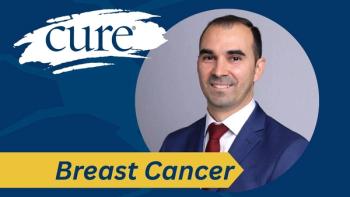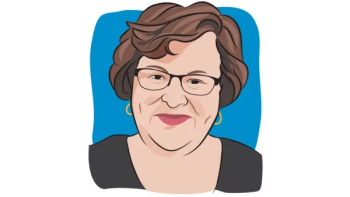
HMAs Underutilized in Older, Female and Non-White Patients with MDS
Key Takeaways
- Hypomethylating agents (HMAs) are underutilized in high-risk MDS patients, especially among older, female, and non-White individuals.
- Only 16.1% of Medicare patients with newly diagnosed MDS received HMAs, despite being the standard treatment for high-risk cases.
In patients with high-risk myelodysplastic syndromes, hypomethylating agents are underutilized, particularly among older, female and non-White patients.
Among patients with high-risk myelodysplastic syndromes (MDS), guideline-recommended treatment via hypomethylating agents, or HMAs, is underutilized, particularly among older, female and non-White patients, researchers have found.
“Our work highlights the need to shift our approach beyond disease-related factors to recognize and narrow disparities in HMA treatment patterns in routine clinical practice to improve outcomes,” researchers noted in their findings, published in the journal Blood Neoplasia.
Researchers found that only 16.1% of Medicare patients newly diagnosed with MDS received treatment with hypomethylating agents (HMAs) between 2011 and 2014. According to a news release issued by the American Society of Hematology (ASH), this figure represents roughly half of the estimated 30% to 40% of patients who are considered high risk at diagnosis. For those patients, HMAs are the recommended standard treatment option.
The analysis also highlighted significant disparities in treatment access. Patients 85 years or older, women, and individuals who were not White were far less likely to receive HMAs. Specifically, patients 85 and older had 59% lower odds of starting HMAs compared with patients ages 65 to 74. Women were 19% less likely to begin HMA therapy, Black patients were 30% less likely, and patients of other racial backgrounds were 22% less likely compared with White patients.
“The disparities we found based on gender, race, and ethnicity were really striking,” said Dr. Sudipto Mukherjee, lead author of the study and a physician in the department of hematology and medical oncology at Cleveland Clinic, in the release. “Given the absence of newly approved therapies over the last two decades, the most impactful way to improve outcomes in newly diagnosed high-risk MDS requires that we do better with the available therapies. Making changes with these therapies and how they are given — when to treat and how to treat — is a key intervention that can have a huge impact.”
According to ASH, this research represents the largest analysis to date of MDS treatment patterns in the United States, as well as the most comprehensive study of real-world HMA use.
To conduct the study, researchers reviewed Medicare claims data from more than 49,000 Americans to determine who received HMAs and whether treatment was being administered in line with clinical guidelines.
The findings showed that the best response rates occurred when patients received four to six one-month treatment cycles. However, more than one-third of patients discontinued treatment by the end of the fourth cycle, and half had stopped by the end of the sixth. Only 30% to 40% of patients received the full guideline-recommended dose during each of the first four cycles.
“If you are not even treating the patients for the recommended duration of time, you will not see a response,” Mukherjee said in the release. “When starting these treatments, blood counts and transfusion needs may initially get worse before they improve, and you have to plow through it. That is not the time to discontinue, but that is what the data is saying.”
What to Know About Hypomethylating Agents for MDS Treatment
According to the American Cancer Society, HMAs are chemotherapy drugs that change how certain genes within a cell are regulated. They can activate genes that help immature blood cells mature properly and can destroy cells that divide rapidly.
These medications can cause some of the same side effects as traditional chemotherapy, though they are often milder. The most common side effect is an early drop in blood cell counts. Other potential issues include fever, nausea, vomiting, diarrhea, constipation, fatigue, and weakness.
References
- “Disparities in Real-World Treatment Patterns of Hypomethylating Agents Among Patients with Myelodysplastic Syndromes in the US” by Dr. Sudipto Mukherjee et al., Blood Neoplasia.
- “Effective Therapy for MDS is Vastly Underused, Especially in Female and Non-White Patients,” news release; https://www.hematology.org/newsroom/press-releases/2025/effective-therapy-for-mds-is-vastly-underused
- “Medicines for Myelodysplastic Syndromes (MDS);” American Cancer Society; https://www.cancer.org/cancer/types/myelodysplastic-syndrome/treating/chemotherapy.html
For more news on cancer updates, research and education,





